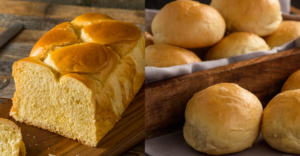What Is Nachni Flour And Why Is It So Popular?
What To Know
- Nachni flour can be cooked into a nutritious porridge, providing a warm and comforting meal.
- Nachni flour is a remarkable ancient grain that offers a wealth of nutritional benefits and culinary versatility.
- Whether you enjoy it in traditional rotis, comforting porridge, or inventive desserts, nachni flour is a culinary treasure that nourishes both body and mind.
What is Nachni Flour?
Nachni flour, also known as finger millet flour, is a gluten-free, nutritious flour derived from the nachni grain. This ancient grain, native to India and Africa, has been a staple food for centuries due to its exceptional nutritional value and versatility.
Nutritional Powerhouse
Nachni flour is a treasure trove of essential nutrients, including:
- Protein: Rich in protein, it supports muscle health and satiety.
- Fiber: Abundant in fiber, it promotes digestive health and regulates blood sugar levels.
- Iron: A significant source of iron, it prevents anemia and improves energy levels.
- Calcium: Contains calcium, crucial for bone health and preventing osteoporosis.
- Antioxidants: Rich in antioxidants, it protects against cell damage and chronic diseases.
Health Benefits of Nachni Flour
Incorporating nachni flour into your diet offers numerous health benefits:
- Supports Weight Management: Its high fiber content promotes fullness, reducing calorie intake and aiding weight loss.
- Improves Blood Sugar Control: The fiber in nachni flour slows down sugar absorption, preventing spikes in blood glucose levels.
- Reduces Cholesterol: The soluble fiber in nachni flour binds to cholesterol in the digestive tract, reducing its absorption and improving heart health.
- Boosts Immunity: The antioxidants in nachni flour strengthen the immune system, protecting against infections and diseases.
- Promotes Gut Health: Its prebiotic properties nourish beneficial gut bacteria, supporting digestive health and overall well-being.
Culinary Versatility
Nachni flour is a versatile ingredient that can be incorporated into various dishes:
- Rotis and Bhakris: Nachni flour is traditionally used to make flatbreads like rotis and bhakris, which are staples in Indian cuisine.
- Porridge: Nachni flour can be cooked into a nutritious porridge, providing a warm and comforting meal.
- Soups and Stews: Add nachni flour to soups and stews for a thickening agent and nutritional boost.
- Desserts: Its earthy flavor complements desserts such as cookies, cakes, and puddings.
How to Use Nachni Flour
Using nachni flour is simple and straightforward:
- Measure and Mix: Measure the desired amount of nachni flour and mix it with other ingredients as per the recipe.
- Add Water Gradually: Add water gradually while kneading or mixing to achieve the desired consistency.
- Cook Thoroughly: Nachni flour takes longer to cook than other flours, so ensure it is cooked thoroughly before consuming.
Precautionary Measures
While nachni flour is generally safe for consumption, there are a few precautions to consider:
- Allergic Reactions: Some individuals may be allergic to nachni flour, so it is advisable to introduce it gradually into your diet.
- Digestive Issues: Consuming large amounts of nachni flour may cause digestive discomfort in some people.
- Phytic Acid: Nachni flour contains phytic acid, which can interfere with the absorption of certain minerals. Soaking or sprouting the grain before use can reduce its phytic acid content.
Conclusion: Embrace the Goodness of Nachni Flour
Nachni flour is a remarkable ancient grain that offers a wealth of nutritional benefits and culinary versatility. From supporting weight management to boosting immunity, its health-promoting properties make it an excellent addition to a balanced diet. Whether you enjoy it in traditional rotis, comforting porridge, or inventive desserts, nachni flour is a culinary treasure that nourishes both body and mind.
FAQs
Q: Is nachni flour gluten-free?
A: Yes, nachni flour is naturally gluten-free, making it a suitable choice for individuals with celiac disease or gluten intolerance.
Q: How can I incorporate nachni flour into my diet?
A: Nachni flour can be used in a variety of dishes, including rotis, bhakris, porridge, soups, stews, and desserts. It can also be used as a thickening agent or nutritional boost in smoothies and baked goods.
Q: What are the potential side effects of consuming nachni flour?
A: Some individuals may experience digestive discomfort if they consume large amounts of nachni flour. Additionally, it is important to note that nachni flour contains phytic acid, which can interfere with the absorption of certain minerals. Soaking or sprouting the grain before use can reduce its phytic acid content.
